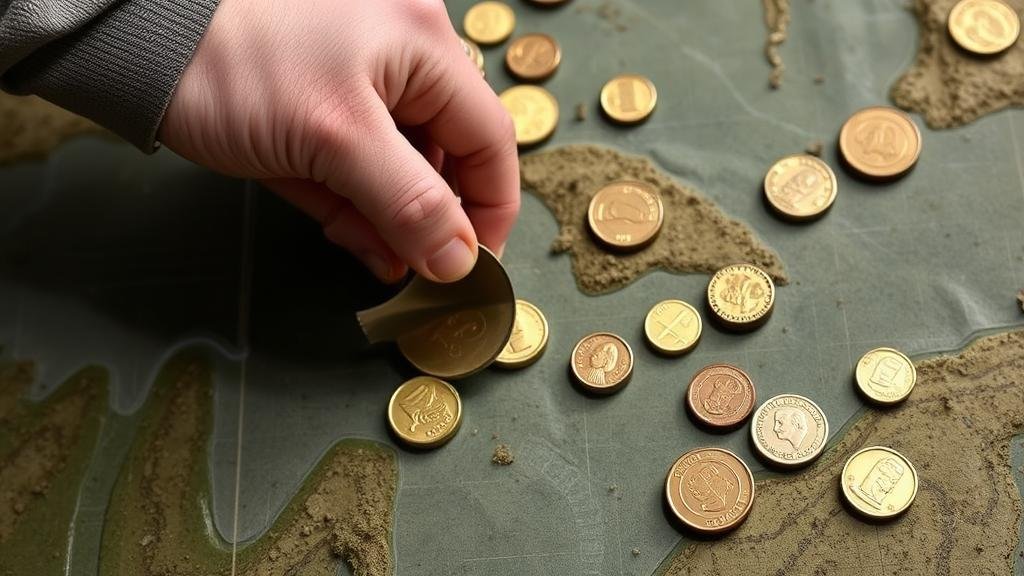Detecting for Coins in Areas of Historical Maritime Trade
Detecting for Coins in Areas of Historical Maritime Trade
Detecting for coins in areas of historical maritime trade presents a unique opportunity for enthusiasts and professionals alike to uncover relics of the past. Maritime trade routes have historically been the conduits of economic and cultural exchange, leading to the dispersion of coins that serve not only as currency but also as historical artifacts. This article delves into the methodologies of detecting for coins, the historical significance of maritime trade, and practical considerations for maximizing the likelihood of discovery.
Understanding the Historical Context
Maritime trade has shaped economies and cultures for centuries. Significant maritime trade hubs such as Venice, Genoa, and Lisbon were pivotal during the Middle Ages and the Age of Exploration. For example, the establishment of the East India Companies facilitated the exchange of massive amounts of goods and currency between Europe and Asia. The coins produced during these periods — often engraved with unique characteristics — are now considered invaluable to historians and collectors.
According to the British Museum, around 90% of the worlds trade was conducted via maritime routes before the advent of airplanes and container ships. This extensive trade generated a wealth of coins from various regions, possible to find across coastlines and trading posts where ships would dock.
Effective Metal Detecting Techniques
Detecting coins requires a combination of advanced technology and a well-informed strategy. The following are widely accepted techniques that maximize the effectiveness of metal detecting in historical maritime areas:
- Choosing the Right Equipment: High-quality metal detectors equipped with discrimination capabilities can differentiate between types of metals and help identify potential coins. Detectors designed specifically for beach and shallow water environments can also enhance your efforts.
- Researching Historical Maps: Studying old maritime maps can reveal historical trade routes. Understanding where docks and marketplaces existed enables focused searches in high-potential areas.
- Understanding Tidal Patterns: Coin finding is often best around low tide. Understanding tidal fluctuations allows detectors to search areas that are typically submerged or challenging to access.
Legal Considerations and Ethical Practices
Before commencing a coin detection project, understanding the legal implications is crucial. Laws regarding metal detecting vary from one jurisdiction to another. In the United States, for instance, the Archaeological Resources Protection Act (ARPA) governs the digging and removal of artifacts from cultural and historical sites. Also, many countries mandate permissions even for beach detection.
Ethical detecting practices include:
- Obtaining Permissions: Always secure permission from landowners or local authorities before detecting on private or public land.
- Reporting Finds: Enthusiasts are encouraged to report significant finds to local heritage organizations to contribute to historical records.
Noteworthy Case Studies
Several remarkable finds throughout history highlight the potential rewards of detecting in maritime regions. The 1715 Spanish treasure fleet disaster near Floridas coast resulted in wrecks that have yielded millions in coins and jewelry. In 2015, a diver discovered approximately 350 coins from the shipwreck of the Nuestra Señora de Atocha, each coin dating back to the 17th century, illustrating the immense historical value resting in underwater sites.
Another case involved the discovery of a cache of Roman coins on the shores of a Welsh beach, attributed to historical trade practices with the Romans. These coins, found by a local detectorist, showcased the profound cultural exchanges facilitated through maritime routes.
Modern Applications and Technologies
Modern technologies continuously improve the efficiency of coin detecting in maritime zones. Ground Penetrating Radar (GPR) is becoming an invaluable tool that aids in identifying areas where coins may be buried. Also, Geographic Information Systems (GIS) help researchers visualize historical trade routes and develop layers of data encompassing historical finds.
Also, community-driven databases and online forums are becoming platforms for information sharing, enabling adventurers to collaborate and share significant finds while fostering a spirit of responsible detecting.
Actionable Takeaways
Detecting for coins in areas of historical maritime trade provides a thrilling communion with our past. By combining robust research, appropriate tools, ethical practices, and modern technology, enthusiasts can increase their chances of finding valuable coins. Always remember the importance of research and permission, as the journey not only enriches the individual detectorist but also contributes to the collective understanding of our maritime history.



